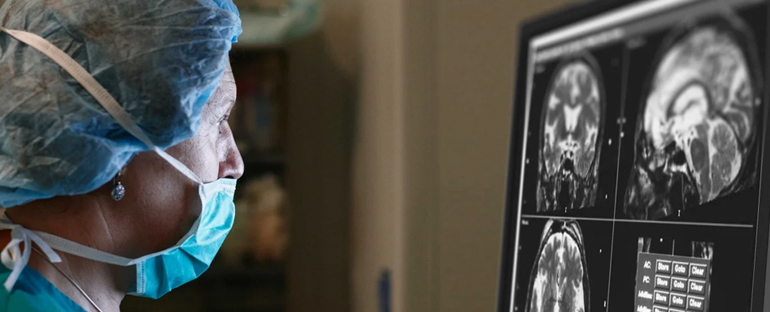
Eye tracking is seeing growing use in clinical research. Eye movement analysis is studied for the identification of ocular disease, as well as mental and neural disorders such as autism spectrum disorder, ADHD, and Parkinson's disease.
Eye tracking can improve existing clinical methods for screening and diagnostics when studying:
• Alignment, such as in strabismus or amblyopia (lazy eye)
• Fixation stability, smooth pursuit, or saccadic movements
• Visual field
• Paediatric vision issues
• Social interaction characteristics
Neurological diseases and brain injuries
Investigating the scan patterns and control mechanisms of eye movement can provide early indicators for conditions such as autism spectrum disorder, Alzheimer's, and schizophrenia.
In research aimed at developing new means of screening neurological diseases, eye tracking paves the way for the investigation of markers (parameters that can indicate either normal function or disease). Automated assessment processes and the ability to quantify data provide new therapeutic follow-up opportunities for medical professionals. This makes it possible to follow disease or rehabilitation progression in an objective and measurable way.
Clinical areas of research include:
• Autistic spectrum disorder (ASD) and attention deficit hyperactivity disorder (ADHD)
• Cognitive decline, such as dementia, Alzheimer's, Lewy body, and Parkinson's
• Reading and learning difficulties, such as dyslexia
• Stroke and non-traumatic brain injury
• Amyotrophic lateral sclerosis (ALS)
• Schizophrenia
• Receptive language, expressive language, or cognitive functioning
i. Ophthalmology
Eye tracking helps ophthalmologists better understand eye movements and eye movement problems in order to develop a means to prevent, diagnose, and treat abnormalities or ocular disease in clinical situations.
Eye tracking enables researchers to study the dynamics of eye movement. This is particularly useful for uncovering characteristics that are diagnostic of states or conditions. This objective, quantitative information provides a basis for comparison to normative data. Researchers can then see the differences that support particular diagnoses or the identification of impairments.
Eye tracking helps you explore:
• Saccadic performance, such as latency, overshoot, and undershoot
• Fixation stability, such as drift
• Smooth pursuit, such as asymmetries between eye movement and stimuli
• Alignment, such as strabismus (uncontrolled inward or outward eye movement) or amblyopia (lazy eye)
• Nystagmus (rapid eye movements), such as the slope of the slow phase and amplitude of the fast phase